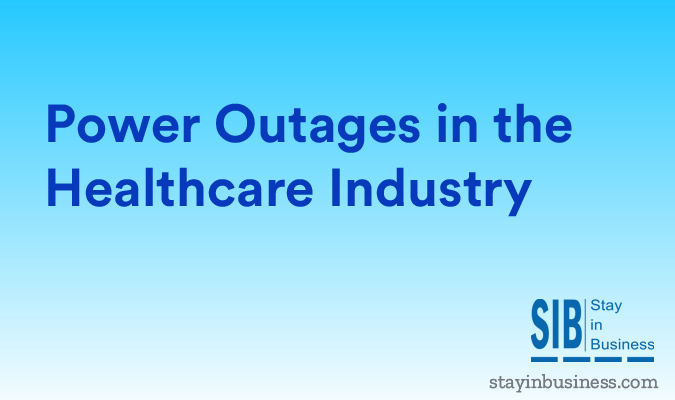Power Outages in the Healthcare Industry

Power outages in the healthcare sector are caused by numerous factors that can be both forecast as well as unexpected, plunging in the process medical facilities into utter darkness and stalling data center operations. Seemingly inconsequential incidents such as Mylar balloons landing on power lines can interrupt power supply.
Such interruptions often last for hours before supply is restored. During power outages, critical tasks, applications and data have to be restored through standby systems while patient appointments are rescheduled.
Operations can be seamlessly failed over to a DR site equipped with generators and UPS backup. In the event of major catastrophes such as cyclonic storms, facilities that are equipped with generators would require fuel supplies for several days. As a result, many large medical institutions have contractual agreements with fuel suppliers to counter these contingencies.
Remote diagnosis and treatment, as well as smartphone aided tasks continue operating by shifting telecommunications and IT systems operations to alternate facilities which require a stable supply of electricity. The moment there is a power outage, crucial resources become unavailable, which is why many industry experts strongly recommend a minimum of three days data backup.
Staying Prepared
Healthcare institutions plan their responses in advance by hiring a power supplier to inspect their site’s existing infrastructure for flaws and improvements. Industry specific consultancy services are also available with the Healthcare & Public Health Sector Coordinating Councils.
Most healthcare facilities have UPS support. These standby systems are especially used to cover patient care systems. Through business impact analysis and disaster recovery planning, hospitals can identify their mission critical systems that need to be provided with backup supply during a power outage.
While most facilities are equipped with backup supplies to deal with power outages, the real challenge involves having sufficient resources on standby that last the duration of the disaster.
Mitigating the impact of power outages takes time as personnel arrive at the location, assess the problem and implement a relevant solution.
Power suppliers for their part prioritize healthcare facilities during a power outage, given how critical their operations are. Power suppliers even allocate customer account managers who keep hospitals informed on the status of response efforts and when electricity supply will be restored. Hospitals even seek expert advice on the type and capacity of generators to be used as well as how to maximize fuel efficiency during emergencies.
Other options include redundant electric feeds and generators that run on natural gas. Power companies also employ personnel who associate closely with police and fire departments to prioritize response efforts for healthcare institutions with limited backup power capabilities.
Operational Constraints
Power outages are not discussed extensively in the healthcare sector. Individuals within the industry can be quite reluctant to disclose information on standard practices. Although generators can be used to support surgical operations during power outages, it is not the most optimal option. For instance, while gamma knife surgeries can be performed with a generator backup, the surgeon might not have access to software assisted data. During a power outage, it is highly probable that the organization might lose backup data.
The impact can be worse during a cyber attack that compromises multiple IT systems and puts the generator out of sync and operations can’t be restored.
Cyber attacks that directly target the electric grid, crucial infrastructural components or the grid’s security can severely compromise healthcare operations. This is particularly true in the case of intrusions that take control of industrial control system networks. The malware infiltrating the industrial control system networks can severely impact system control or functionality.
IoT devices connected to networks are vulnerable to botnet malware that seize device control and deploy attacks such as denial of service. These IoT based cyber attacks can further gain control of electric utility networks, disrupt systems and manipulate the operations of electric power networks.
One of the major concerns of power outages is the disruption to connectivity and the loss of access to databases and auxiliary systems which are almost entirely online. This includes:
- Medical devices
- Drug monitoring systems
- Picture archiving and communication system (PACS)
Conclusion
Having a detailed plan for responding to power outages is crucial, especially when they persist during prolonged periods of time. Their occurrence would not only disrupt operations, but hospital staff would lose access to a host of critical systems and services that could have devastating repercussions on the hospital’s goals and objectives.
Categories: Business Continuity, Data Security, DR Plans, Health
